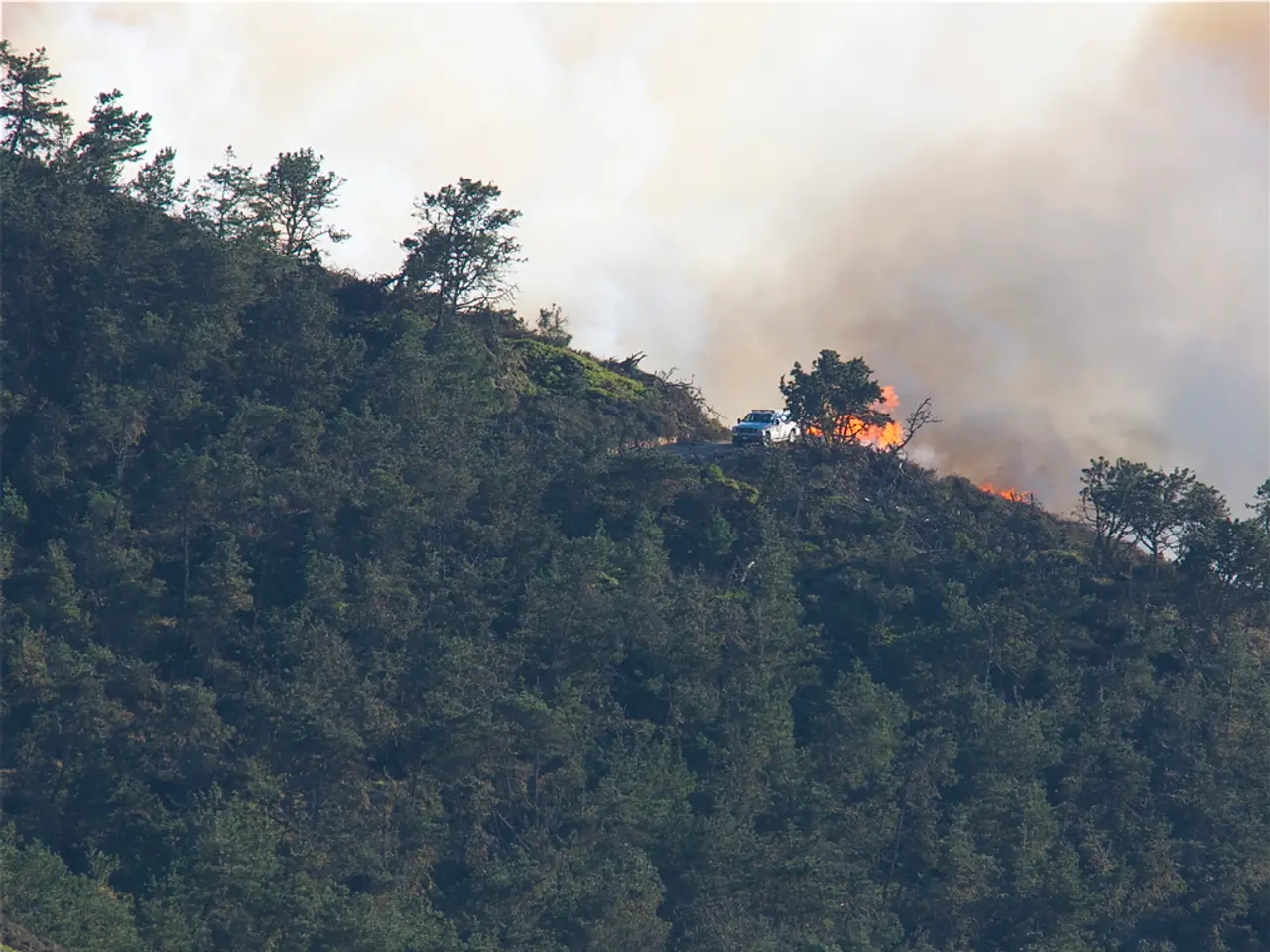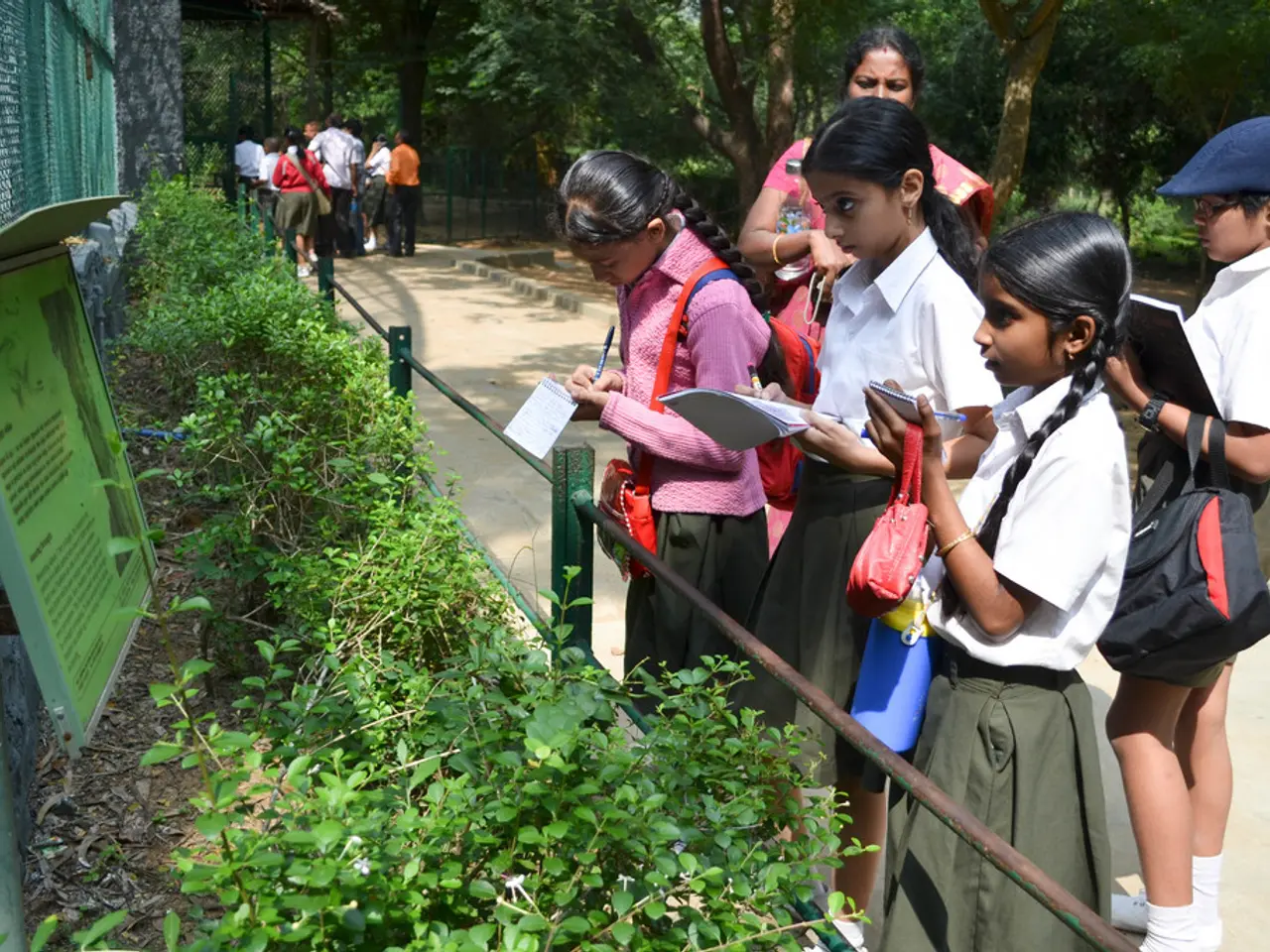Torrential monsoon rain triggers flood alerts in Pakistan, causing the death toll to climb to 64 within a week.
In the coming days, Pakistan is bracing itself for another round of monsoon rains and potential flooding, as multiple authorities have issued warnings and alerts. Here's a summary of the current weather systems, affected provinces, and precautionary measures.
**Current Weather Systems**
Heavy rainfall and flash floods are expected in various parts of Pakistan, particularly in mountainous regions like Khyber Pakhtunkhwa. The National Disaster Management Authority (NDMA) has issued a nationwide monsoon alert, anticipating heavy rain and flood risks starting from July 6, 2025. The Provincial Disaster Management Authority (PDMA) has also warned of a heightened risk of Glacial Lake Outburst Floods (GLOFs) in Khyber Pakhtunkhwa.
**Affected Provinces**
Khyber Pakhtunkhwa, known for its mountainous terrain, is particularly vulnerable and has already seen significant damage and loss of life, especially in the Swat Valley. The monsoon alert issued by NDMA suggests that the entire country is at risk, with potential flooding expected in various regions starting July 6.
**Precautionary Measures**
Authorities are urging residents in affected areas to stay informed and follow evacuation orders promptly to minimize risk. Evacuations are likely to be recommended in regions prone to flooding, especially near rivers and streams. Communities are advised to ensure that drainage systems are clear and functioning properly.
News outlets and authorities are disseminating information to keep the public informed and prepared for potential flooding. Rescue efforts are ongoing, and emergency services are on standby to respond quickly to flood situations.
**Additional Measures**
The Pakistan Meteorological Department (PMD) has advised the public to take precautionary measures, such as staying indoors during thunderstorms, avoiding unnecessary travel, and keeping children away from electricity poles and waterlogged areas. Municipal and district administrations have been instructed to clear stormwater drains, activate emergency response teams, and prepare for possible evacuations.
In light of these warnings, it's crucial for residents in affected areas to stay vigilant and follow all instructions from local authorities.
**Historical Context**
In 2022, record-breaking monsoon rains and glacier melt caused catastrophic floods that affected 33 million people and killed more than 1,700. Pakistan consistently ranks among the countries most vulnerable to climate change.
**Important Contacts**
In case of emergencies, citizens are advised to contact the PDMA helpline 1129. The NDMA has also warned tourists against visiting high-altitude and glacial regions during this period.
**Geographical Scope**
The second monsoon spell is expected to affect Rawalpindi, Murree, Attock, Chakwal, Lahore, Faisalabad, Sargodha, Bahawalpur, and D.G. Khan, among other districts. Heavy downpours are expected during this period, which may trigger flash flooding, especially in low-lying and river-adjacent districts.
Given the potential severity of these weather events, it's essential for everyone to stay informed, prepared, and safe.
- Pakistan is expecting travel disruptions due to monsoon rains and potential flooding, particularly in Khyber Pakhtunkhwa and other mountainous regions, as warned by the Provincial Disaster Management Authority (PDMA).
- Art enthusiasts might want to postpone travel plans to Pakistan for the coming days, as an increase in flash floods and heavy rainfall may pose risks, especially in regions like Rawalpindi, Murree, and Lahore.
- Environmental-science and general-news outlets have been reporting on the looming risk of climate-change-induced weather events in Pakistan, such as the current monsoon rains and their potential damage to the environment.
- Scientists and authorities urge the public to take precautionary measures to minimize the impact of these weather systems, including staying indoors during thunderstorms, avoiding unnecessary travel, and ensuring drainage systems are clear.








